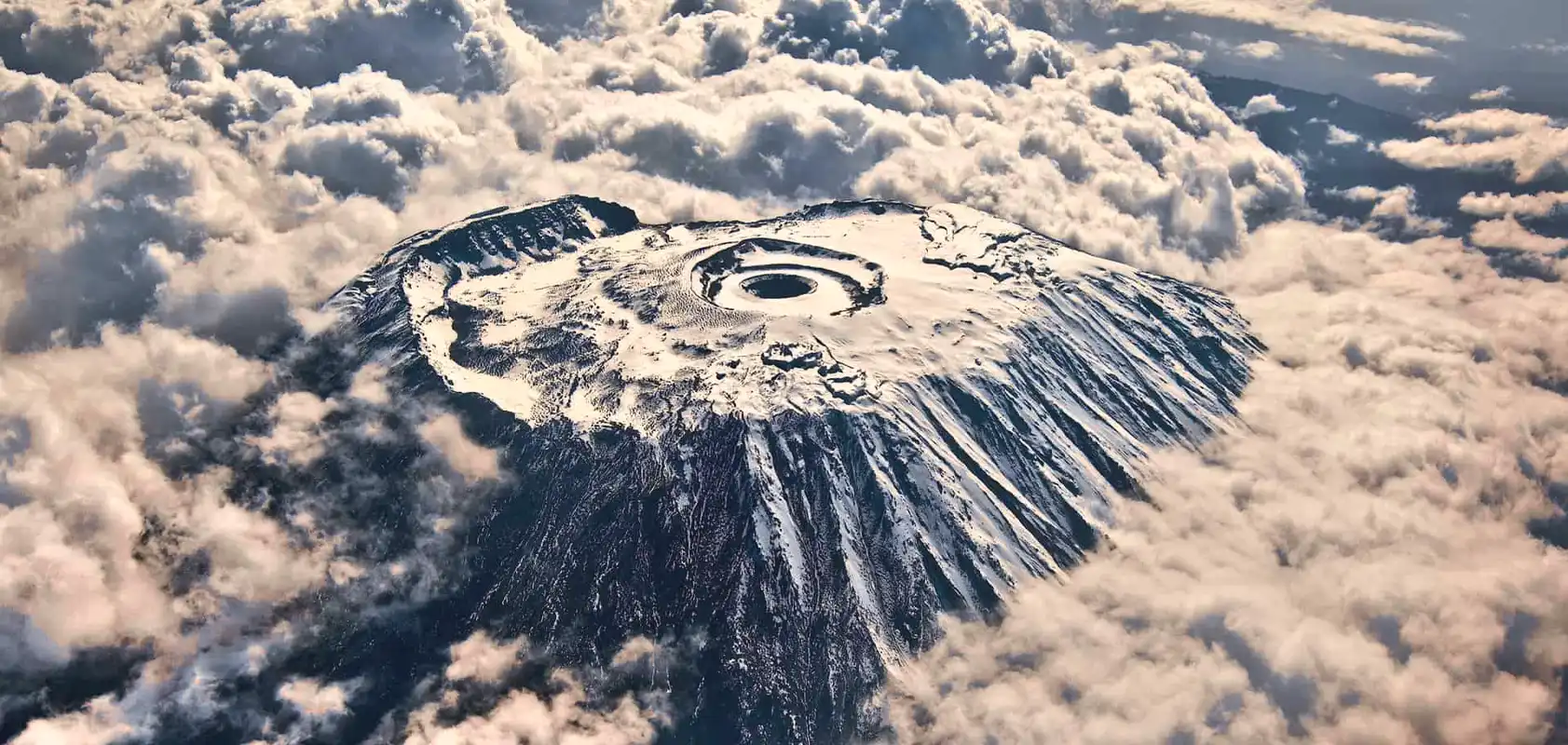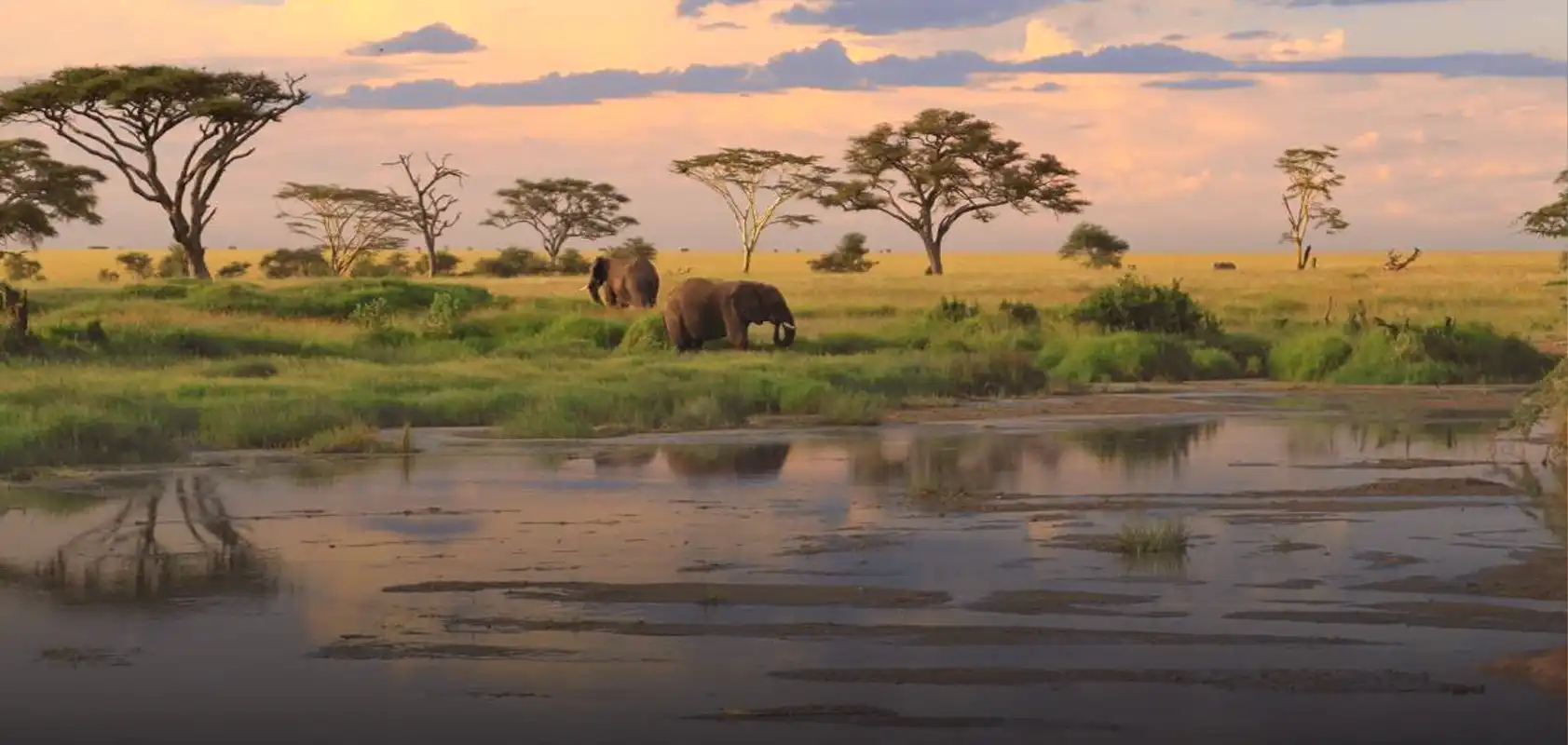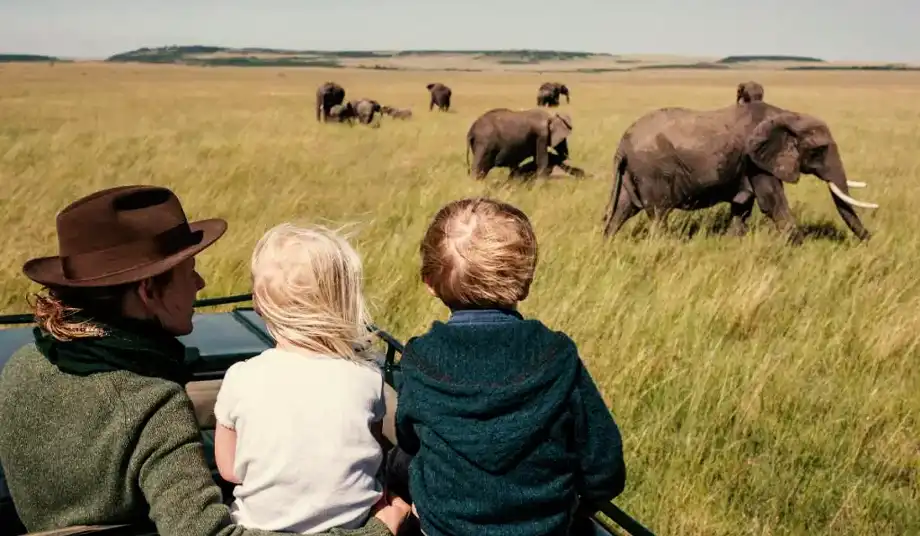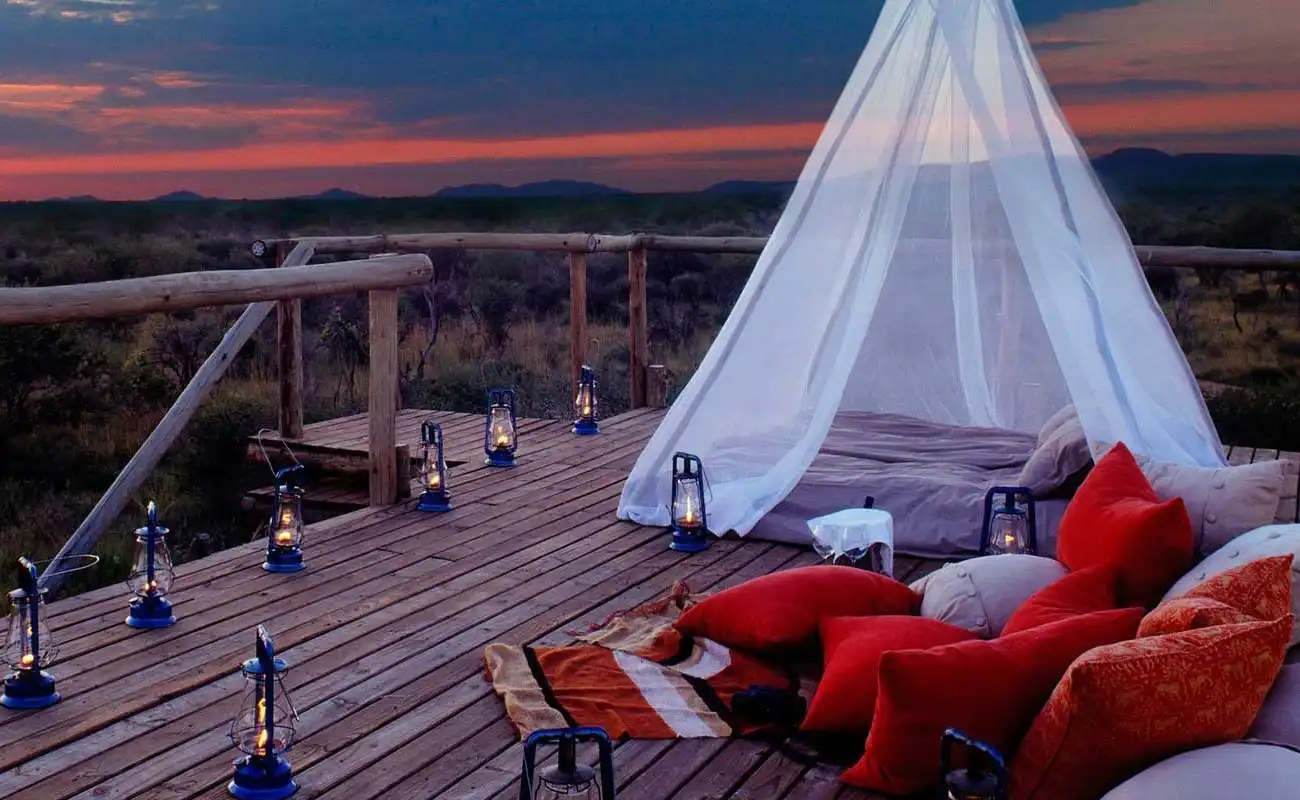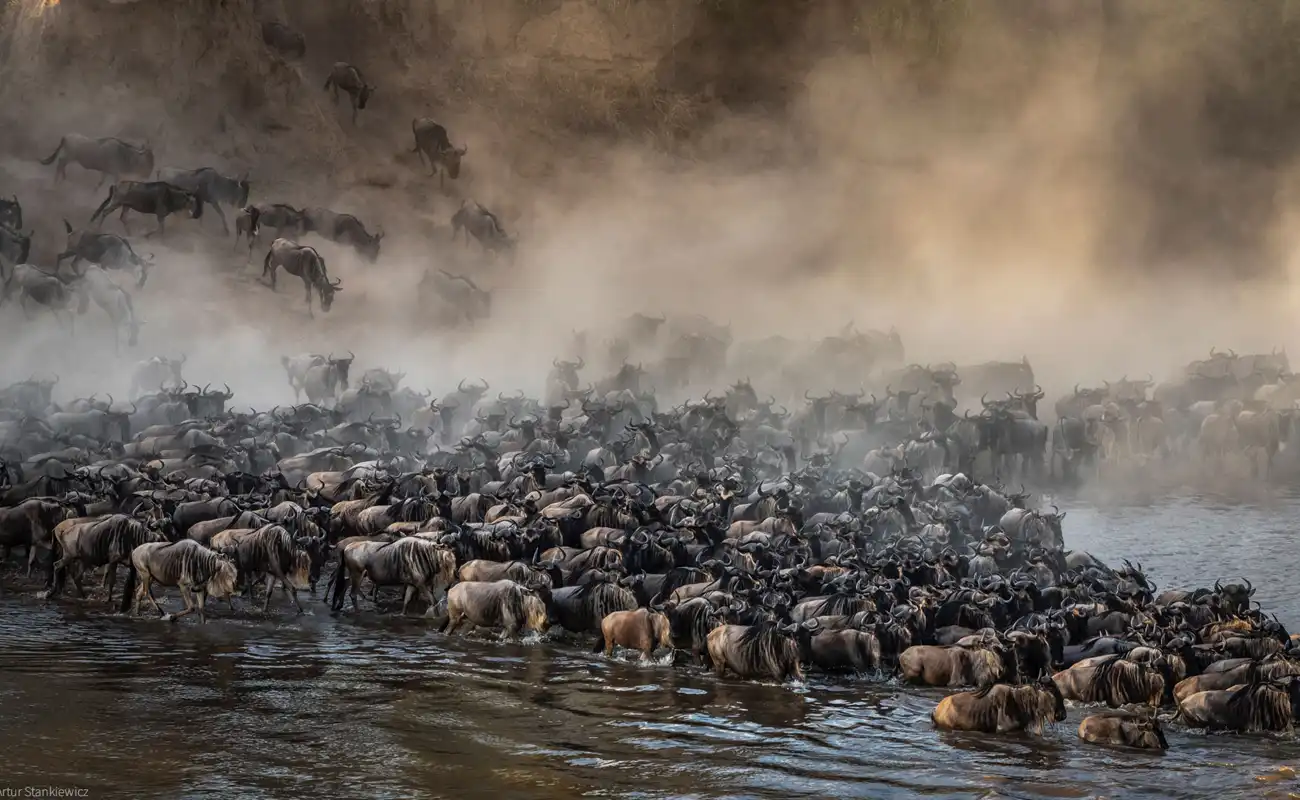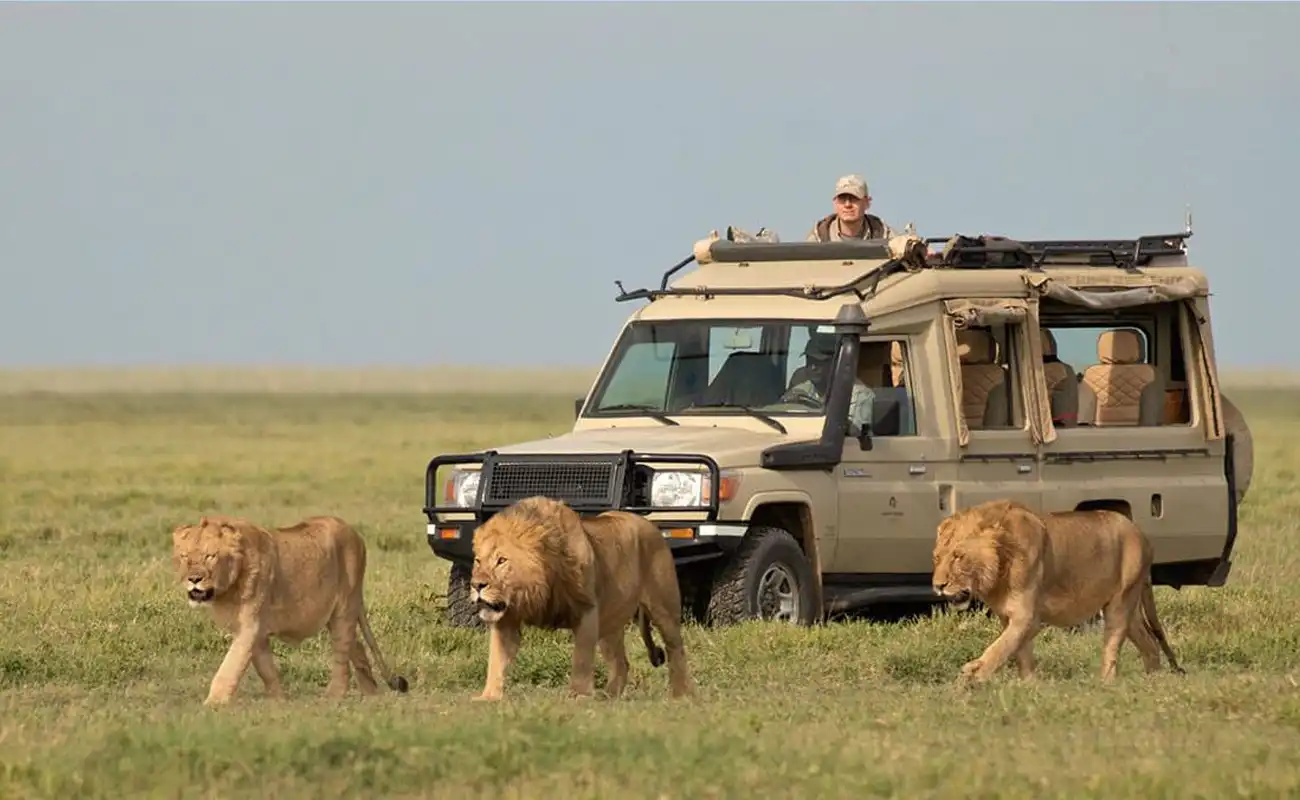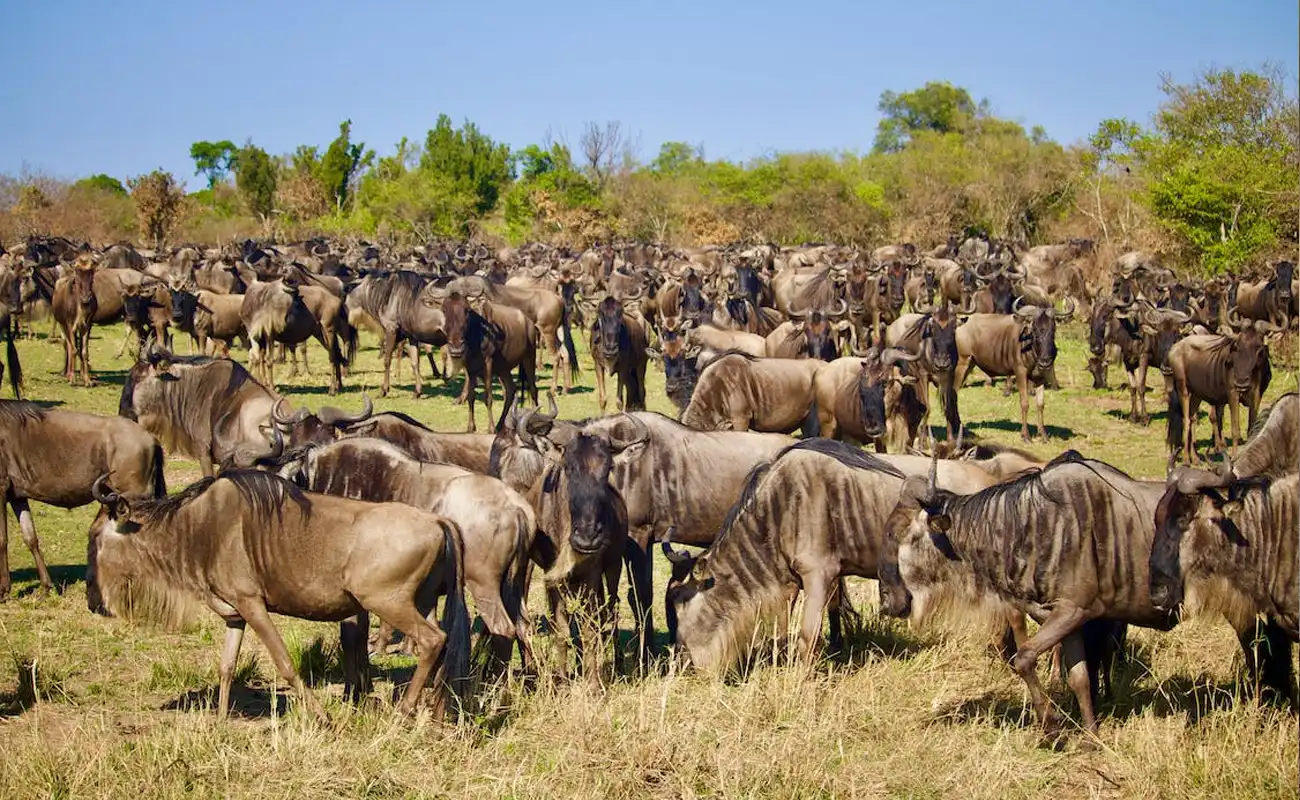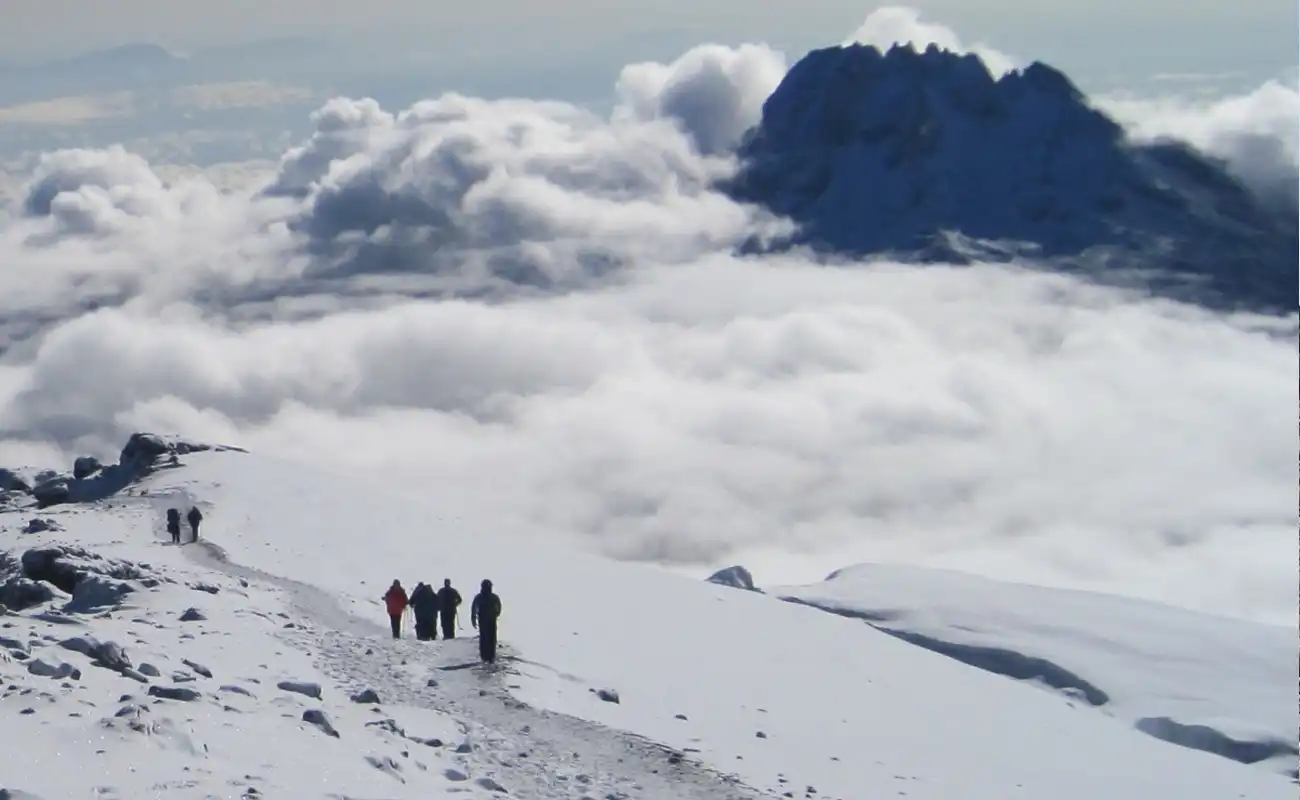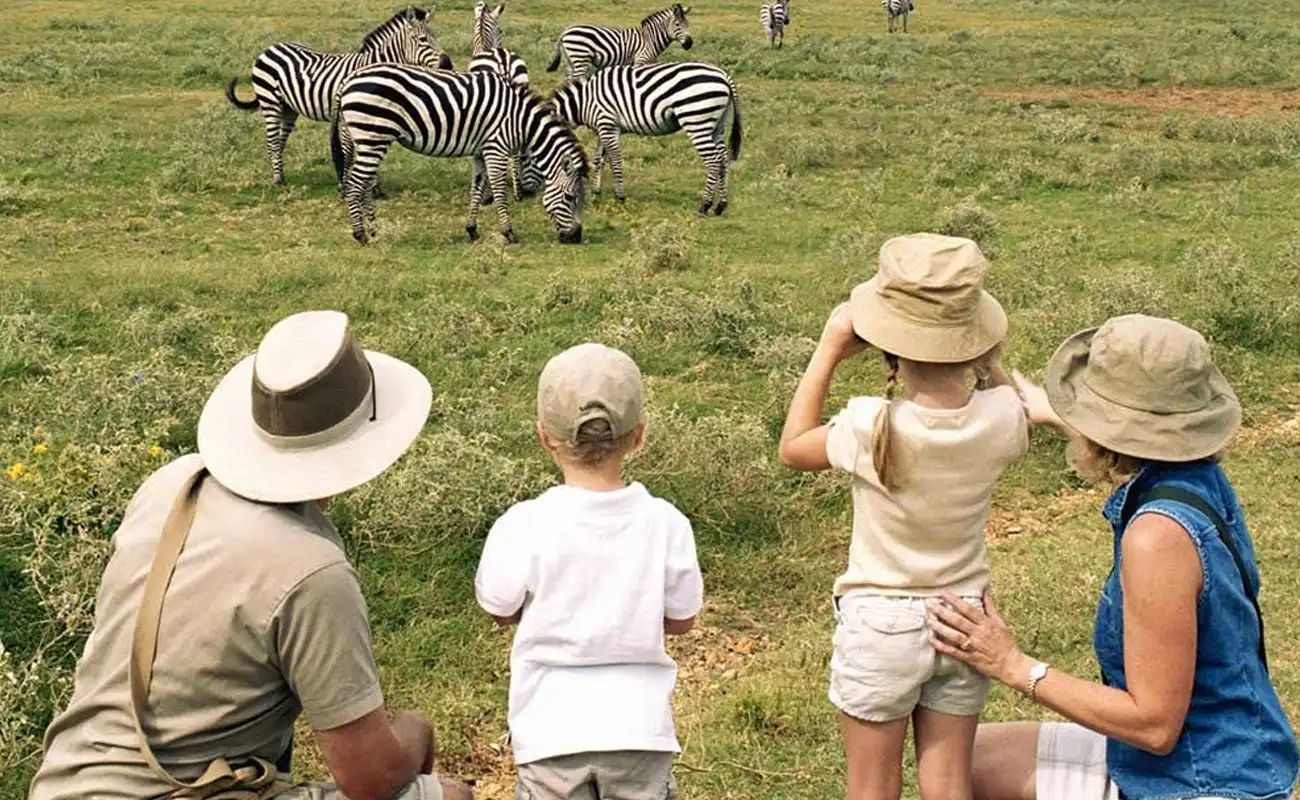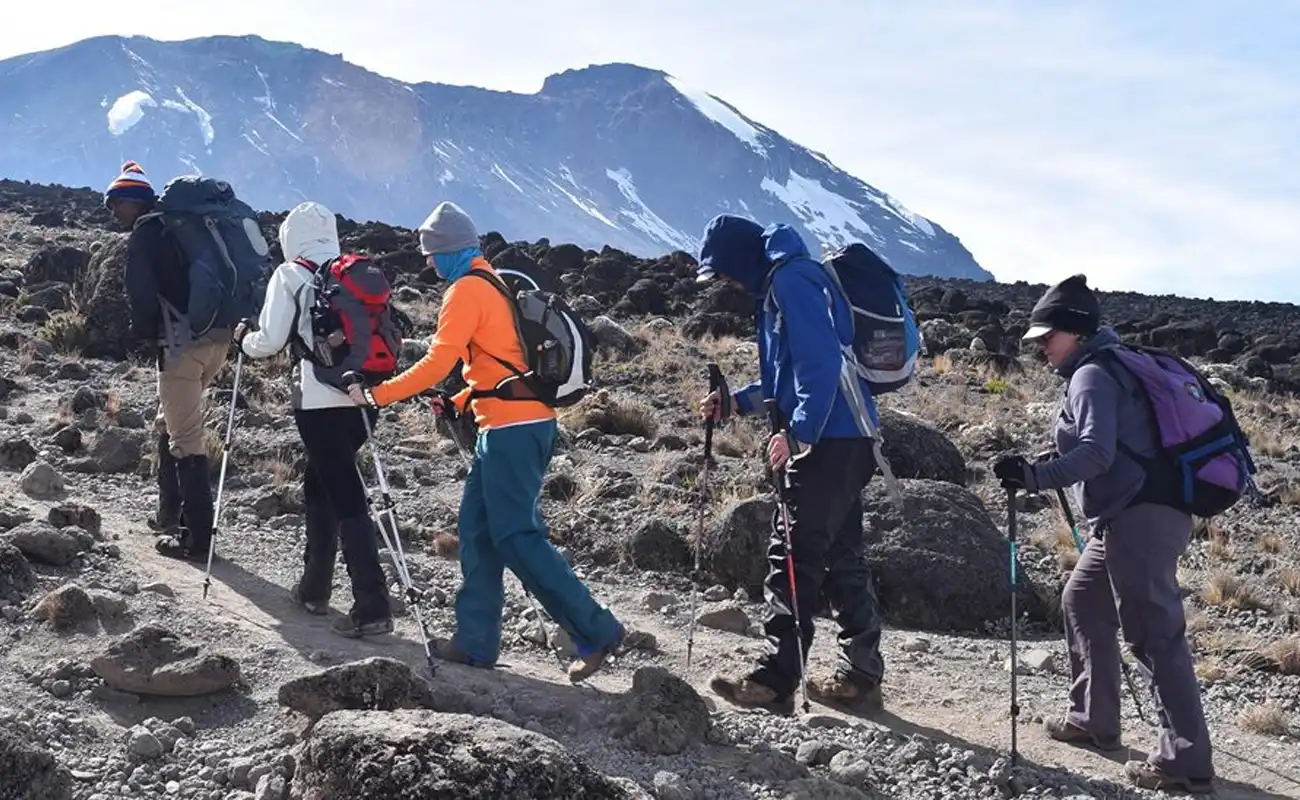Rongai Route
Rongai Route Overview
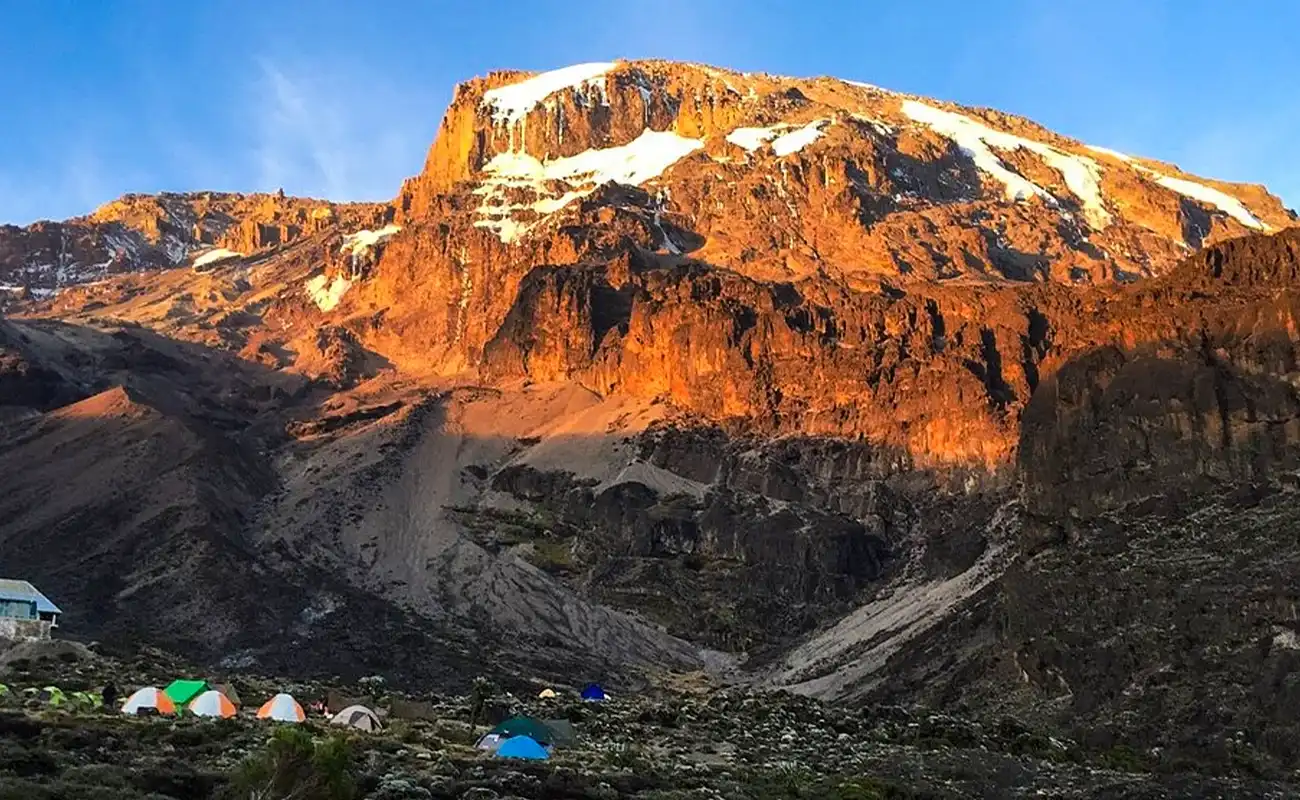
6 Days Rongai Route Itinerary
DAY 1: NALE MURU GATE – SIMBA CAMP: 7km /5mi | 3-4 hrs | Rainforest
Elevation: 1997m/6552ft to 2635m/8645ft
Altitude gained: 638m
Departing from Moshi a 4-5 hour drive will take you through the coffee plantations and Village of Nale Muru to the Kilimanjaro National Park Gate. We will patiently wait for our permits to be issued while watching the hustle and bustle of operations as many crews prepare for the journey ahead Enjoy the beautiful wooded scenery, and windy trails while your guide tells you about the local flora and fauna and natural wildlife you are likely to see. Simba camp sits near the first cave at the edge of the moorland zone with spectacular views of the plains of Kenya.
DAY 2: SIMBA CAMP – SECOND CAVE CAMP: 5.8km/3.6mi | 5-6hrs | Moorland
Elevation: 2635m/8645ft to 3487m/11,440ft
Altitude gained: 852m
After a good night sleep and a hearty breakfast we continue along moorland terrain on a consistent ascending path. You will catch some terrific views of Kibo and get your first glimpse of the ice fields on the Eastern crater rim. The small shrubs of the moorland became thinner as you approve the Second Cave. Temperatures begin to drop.
DAY 3: SECOND CAVE CAMP – THIRD CAVE CAMP: 3.3km/2mi | 3-4hrs | Semi Desert
Elevation: 2635m/8645ft to 3936m/12,913ft
Altitude gained: 449m
After breakfast and packing, you continue your stead ascent, entering into the semi-desert terrain. This relatively short hiking day brings you closer to the Easter ice fields, continually drawing your attention to their beauty. Pay attention to your body and keep your guide informed of any signs of altitude sickness.
DAY 4: THIRD CAVE CAMP- KIBO HUTS: 6.7km/4.2mi | 4-5hrs | Alpine Desert
Elevation: 3936m/12,913ft to 5174m/16975ft
Altitude gained: 1238m
As you depart early the semi-desert zone from the Third Cave early in the morning and begin your trek into the Alpine Desert terrain for the remainder of your ascent. Today’s hike will take you just below the Kibo crater wall to the Kibo Huts. At this point, you will merge with the Marangu Route, which you will use to hike to the summit. You will prepare your clothing and equipment (replace batteries for headlamp and camera) before you go to bed by 7 PM and try to catch a few hours of rest before your summit attempt.
DAY 5: KIBO HUTS – SUMMIT: 4km /2.5 mi up | 5-7hrs | – HOROMBO HUTS: 15.75km /9.8mi down | 5-6hrs | Glaciers, Snow Capped Summit
Elevation: 5174m/16975ft to 5895m/19,341ft
Altitude gained: 721m
Descent to 3721m/12,208ft
Altitude lost: 2174m
Excitement is building as morning comes with an early start between midnight and 2 a.m. This is the most mentally and physically challenging portion of the trek.
We continue our way to the summit between the Rebmann and Ratzel glaciers trying to stay warm and focused of the amazing sense of accomplishment that lies ahead. With a switchback motion in a northwesterly direction and ascend through heavy scree towards Stella Point on the crater rim. You will be rewarded with the most magnificent sunrise during your short rest here. Faster hikers may view the sunrise from the summit. From here on your remaining 1 hour ascent to Uhuru Peak, you are likely to encounter snow all the way.
Congratulations, one step at a time you have now reached Uhuru Peak the highest point on Mount Kilimanjaro and the entire continent of Africa!
After photos, celebrations and maybe a few tears of joy we take a few moments to enjoy this incredible accomplishment. We begin our steep descent down to Mweka Camp, stopping at Barafu for lunch and a very brief rest. We strongly recommend gaiters and trekking poles for uncooperative loose gravel and volcano ash terrain. Well-deserved rest awaits you to enjoy your last evening on the mountain. Overnight Mweka Camp.
DAY 6: HOROMBO HUTS – MARANGU GATE – MOSHI: 20km/12.5mi |6-7hrs | Rainforest
Elevation: 3721m/12,208ft to 1905m/6250ft
Altitude lost: 1816m
After breakfast and a heartfelt ceremony of appreciation and team bonding with your crew it’s time to say goodbye. We continue the descent down stopping at the Mandara Huts for lunch. Remember to tip your guides, cooks, and porters, since you will be leaving them here. You return back to the Marangu Park Gate and receive your summit certificates. As the weather is drastically warmer, the terrain is wet, muddy and steep and we highly recommend Gaiters and trekking poles. From the gate, a vehicle will meet you to drive you back to your hotel in Moshi (about 45 minutes). Enjoy a long over due hot shower, dinner and celebrations!!
7 Days Rongai Route Itinerary
DAY 1: NALE MURU GATE – SIMBA CAMP: 7k /4.3mi | 3-4 hrs | Rainfores
Elevation: 1997m/6552ft to 2635m/8645ft
Altitude gained: 638m
Departing from Moshi a 4-5 hour drive will take you through the coffee plantations and Village of Nale Muru to the Kilimanjaro National Park Gate. We will patiently wait for our permits to be issued while watching the hustle and bustle of operations as many crews prepare for the journey ahead Enjoy the beautiful wooded scenery, and windy trails while your guide tells you about the local flora and fauna and natural wildlife you are likely to see. Simba camp sits near the first cave at the edge of the moorland zone with spectacular views of the plains of Kenya.
DAY 2: SIMBA CAMP – SECOND CAVE CAMP: 5.8km/3.6mi | 5-6hrs | Moorland
Elevation: 2635m/8645ft to 3487m/11,440ft
Altitude gained: 852m
After a good night sleep and a hearty breakfast we continue along moorland terrain on a consistent ascending path. You will catch some terrific views of Kibo and get your first glimpse of the ice fields on the Eastern crater rim. The small shrubs of the moorland became thinner as you approve the Second Cave. Temperatures begin to drop.
DAY 3: SECOND CAVE CAMP – THIRD CAVE CAMP: 3.3km/2mi | 3-4hrs | Semi Desert
Elevation: 2635m/8645ft to 3936m/12,913ft
Altitude gained: 449m
After breakfast and packing, you continue your stead ascent, entering into the semi-desert terrain. This relatively short hiking day brings you closer to the Easter ice fields, continually drawing your attention to their beauty. Pay attention to your body and keep your guide informed of any signs of altitude sickness.
DAY 4: KIKELEWA CAMP- MAWENZI TARN: 3.75km/2.3mi | 3-4hrs | Semi Desert
Elevation: 3487m/11440ft to 4302m/14114ft
Altitude gained: 627m
A short but steep climb up grassy slopes is rewarded by superb views. Leave the vegetation behind shortly before reaching the next camp at Mawenzi Tarn, spectacularly situated in a cirque directly beneath the towering spires of Mawenzi. The afternoon will be free to rest or explore the surrounding area as an aid to acclimatization.
If you are spending an extra day on the mountain, you will camp for two nights here. You can hike up and around Mawenzi for your acclimatization hike.
DAY 5: MAWENZI TARN – KIBO HUT: 8.9km /5mi | 4-5hrs | Alpine Desert
Elevation: 4302m/14,114ft to 4714m/15,466ft
Altitude gained: 412m
Cross the lunar desert of the ‘Saddle’ between Mawenzi and Kibo to reach Kibo campsite at the bottom of the Kibo crater wall. The remainder of the day is spent resting in preparation for the final ascent on Summit Night.
DAY 6: KIBO HUTS – SUMMIT: 4km /2.5 mi up | 5-7hrs | – HOROMBO HUTS: 15.75km /9.8mi down | 5-6hrs | Glaciers, Snow Capped Summit
Elevation: 4302m/14,114ft to 5895m/19,341ft
Altitude gained: 721m
Descent to 3721m/12,208ft
Altitude lost: 2174m
Excitement is building as morning comes with an early start between midnight and 2 a.m. This is the most mentally and physically challenging portion of the trek.
We continue our way to the summit between the Rebmann and Ratzel glaciers trying to stay warm and focused of the amazing sense of accomplishment that lies ahead. With a switchback motion in a northwesterly direction and ascend through heavy scree towards Stella Point on the crater rim. You will be rewarded with the most magnificent sunrise during your short rest here. Faster hikers may view the sunrise from the summit. From here on your remaining 1 hour ascent to Uhuru Peak, you are likely to encounter snow all the way.
Congratulations, one step at a time you have now reached Uhuru Peak the highest point on Mount Kilimanjaro and the entire continent of Africa!
After photos, celebrations and maybe a few tears of joy we take a few moments to enjoy this incredible accomplishment. We begin our steep descent down to Mweka Camp, stopping at Barafu for lunch and a very brief rest. We strongly recommend gaiters and trekking poles for uncooperative loose gravel and volcano ash terrain. Well-deserved rest awaits you to enjoy your last evening on the mountain. Overnight Mweka Camp.
DAY 7: HOROMBO HUTS – MARANGU GATE – MOSHI: 20km/12.5mi |6-7hrs | Rainforest
Elevation: 3721m/12,208 to 1905m/6250ft
Altitude lost: 1816m
After breakfast and a heartfelt ceremony of appreciation and team bonding with your crew it’s time to say goodbye. We continue the descent down stopping at the Mandara Huts for lunch. Remember to tip your guides, cooks, and porters, since you will be leaving them here. You return back to the Marangu Park Gate and receive your summit certificates. As the weather is drastically warmer, the terrain is wet, muddy and steep and we highly recommend Gaiters and trekking poles. From the gate, a vehicle will meet you to drive you back to your hotel in Moshi (about 45 minutes). Enjoy a long over due hot shower, dinner and celebrations!!
Mount Kilimanjaro Climbing Guide
Here, we’ve compiled crucial insights to prepare you for your Kilimanjaro climb. Find valuable hints, tips, tricks, and recommendations in our comprehensive guide, all offered free of charge. Dive in!
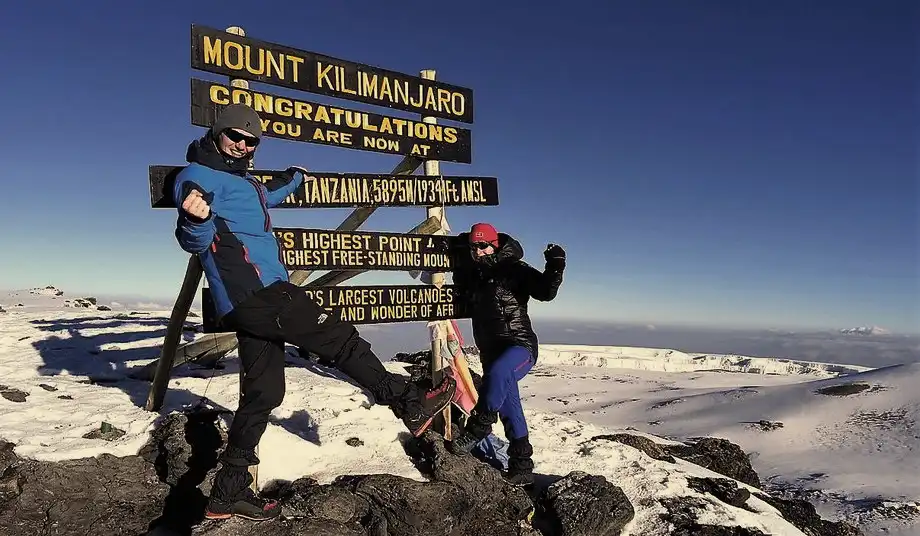
Looking for Something Unique?
Design your own trip
Let's Customize a Tour Based on Your Budget and Your Style
OUR FAVOURITE SAFARI TRIPS
TOP MOST TANZANIA TRAVEL ITINERARIES

